Lost Odyssey Review
Lost Odyssey
It might be a throwback to the good old days of Japanese RPGs, but can Lost Odyssey's emotionally-charged storyline make it a true classic?
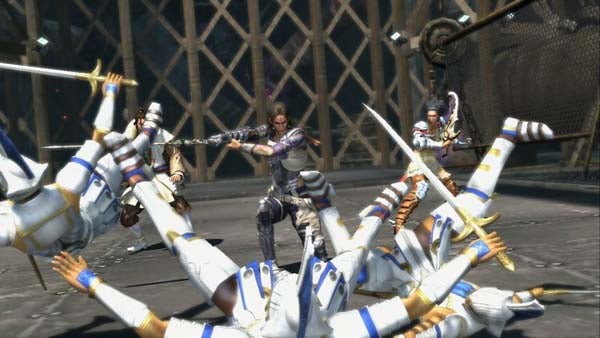
Verdict
Key Specifications
- Review Price: £36.95
We might as well just get this straight from the start. Like Mistwalker’s Xbox 360 debut, Blue Dragon, Lost Odyssey can easily be condemned as a good-looking, HD throwback to the good old days of Japanese RPGs. Nearly two years after Square-Enix tried to revolutionise the genre with Final Fantasy XII, Lost Odyssey feels less like a rival, and more like a deliberate attempt to step backwards to the days of Final Fantasy VIII. Time and again you’ll feel yourself horrified by such hideous anachronisms as random monster encounters, huge stretches without a single save point or the jarring switch from exploration to yet another turn-based combat sequence. While Lost Odyssey has its share of interesting or innovative game mechanics, it’s not a game that’s been designed to drive the genre forwards. No matter how much you love it, all the stuff I’ve just mentioned is guaranteed to get on your nerves at some point during the game. 
It’s impossible to review Lost Odyssey without making comparisons with Final Fantasy XII, so I’m not even going to try. Mistwalker’s founder, Hironobu Sakaguchi, created Square’s classic RPG series and played some role in its progress right up to Final Fantasy X-2, and Lost Odyssey feels very much like an attempt to reclaim that old territory. It’s a sprawling, epic RPG, more serious in tone and more realistic in visual style than Blue Dragon, with the exploration and action framed by exactly the sort of lengthy cinematic cut-scenes that Final Fantasy VII to XII have become famous for. Like Final Fantasy, it takes place in a world where the forces of magic freely mix with elements of Victorian-era industrial technology and great chunks of what you’d normally label sci-fi. Lost Odyssey looks a lot like a Final Fantasy game, and with music from FF series composer, Nobuo Uematsu, it also sounds a lot like a Final Fantasy game.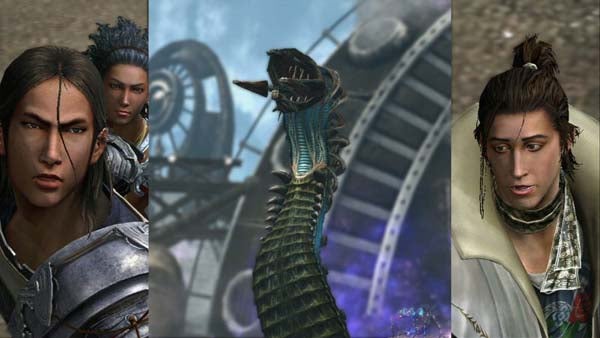
Of course, while it looks like a Final Fantasy game, Lost Odyssey does at least look like you’d imagine a Final Fantasy game would if rendered in glorious high-definition using the Unreal 3.0 engine. That means it looks glorious, narrowing the gap between in-game graphics and cut-scenes more successfully than any Japanese RPG we’ve seen before. Sure, the world has a few muddy textures and Mistwalker hasn’t taken the characters down a totally photo-realistic route, but things like the weather effects, the water effects and the rendering and animation of the heroes are everything you would expect from an HD-era RPG. Architecture, creature design and the attention to detail shown in the character’s hair, clothing or armour are frequently breathtaking. The cinematic depth of field effect is brilliantly employed. 
However, there’s no getting past the fact that Lost Odyssey doesn’t play like an HD-era RPG. You’ll understand this from your first random monster encounter, as a whole lot of nothing in the wilderness suddenly turns out to be a motley crew of savage beasts, and the screen warps to show the sort of preparing-for-battle animation we saw in Final Fantasy VII back in 1997. Where FFXII brought us monsters you could see coming and an AI-controlled party aided by a programmable gambit system, Lost Odyssey takes us back to sudden scraps where you run through each member of the party in order, telling them to attack, defend or use an item or magic spell. Then you watch as the ensuing round of combat takes place, heroes and enemies taking polite turns to batter or blast each other senseless. When it’s over, your victorious heroes run through their cheerful celebration anthem, again like it’s still 1997. It’s like going back in time, only much, much prettier than you remember.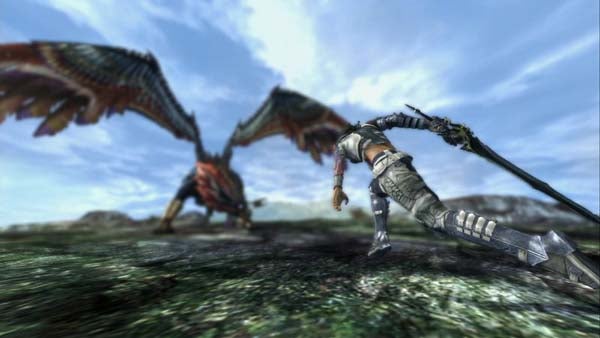
Still, just as they did in Blue Dragon, Mistwalker has tried to introduce some new tweaks. Firstly, your party doesn’t have to be arranged in one long line; you can place spellcasters in a rank behind your bruisers and brawlers and give them a better chance of survival. Secondly, and again like Blue Dragon, combat has been given a real-time element. Here it’s the ring system; give each of your characters an enchanted battle ring, and when it’s their turn to strike a blow, you squeeze and hold the right trigger. A circular indicator now appears over your chosen monster, while another circle shrinks rapidly on top. Release the trigger at the optimum moment and you achieve the perfect hit, dishing out an extra helping of damage for the beast in question. Time it not so well, and the damage bonus isn’t so impressive. Blow it badly, and you’ll even take the edge of the damage by a little. It’s a more interesting system than it might sound, partly because it forces you to do something in combat rather than just make your decisions then sit back and twiddle your thumbs while the battle rages on.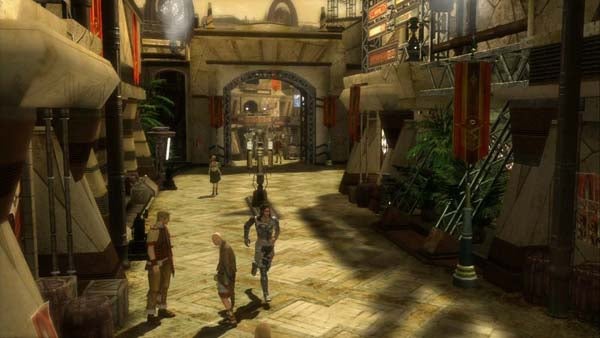
On top of this, the battle rings themselves are the subject of a surprisingly deep system of customisation, whereby various minerals, substances and miscellaneous chunks of dead monster can be worked into new rings with different properties. Some offer general benefits like a straight damage bonus or the ability to build up health or magic while defending, while others are tailored to the destruction of particular groups of monsters – most have some elemental relationship (fire, earth, air, water) and fit into either organic or mechanical categories, and with the right ring you’ll do additional damage to them. While you can customise rings on your own, there’s also a useful ring-smith wandering around who can combine existing rings into new configurations. It’s one of the easiest and most effective crafting systems to grasp that I’ve ever come across.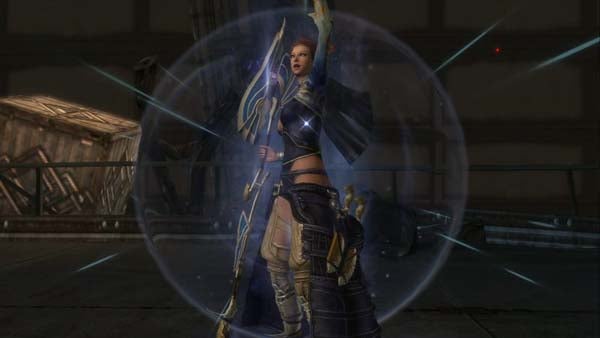
Lost Odyssey also fits in some deep and rewarding skills and magic systems. Interestingly, two of your initial party line-up are immortal – which proves handy as they auto-resurrect after a few turns in battle. To balance this, your superhuman heroes are incapable of learning new skills or levels of magic as they level up. Instead, they need to link to a mortal character and learn the skills from them, or develop new skills by using various enchanted items. I know it sounds tedious, but it’s actually surprisingly compelling as you work out ways in which to get your team immune to poison or up to speed with the latest, greatest spells. Magic, meanwhile, scales up nicely, with elemental relationships again having an important place, and the various attack and defensive spells growing more spectacular as time goes on.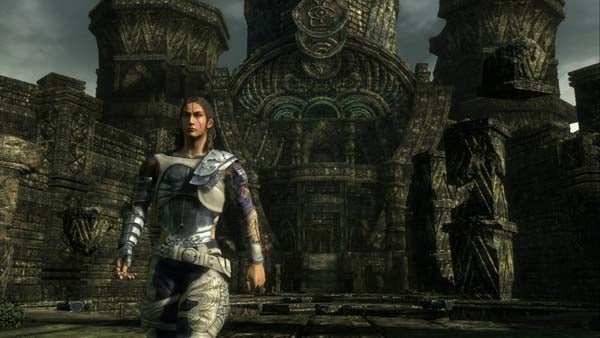
All the same, Lost Odyssey definitely feels rather retro, and some aspects of the game are either bewildering or just plain dumb. You will spend a lot of time watching loading screens – even if individually the loading times are fairly short – and the gaps between save points can be huge. In one case I totted up a good fifty minutes before I saw the next sparkly golden globe that told me I could save. In a game that features some fairly brutal random encounters, this can be hugely irritating. Even more annoyingly, Lost Odyssey has a habit of throwing in set-piece battles or boss encounters where the strength of your enemy’s attack seems totally out of proportion to the current powers of your party. Less than two hours in you’ll meet one who can wipe out every one of your heroes within two turns, and there are several other brick walls of difficulty that you’ll meet later on. Part of me wants to defend these battles on the basis that they produce interesting tactical challenges – and they do – but another part is telling me that a few less dedicated RPG fans might give up at such points and return the game to the shop from whence it came. This would be a tragedy.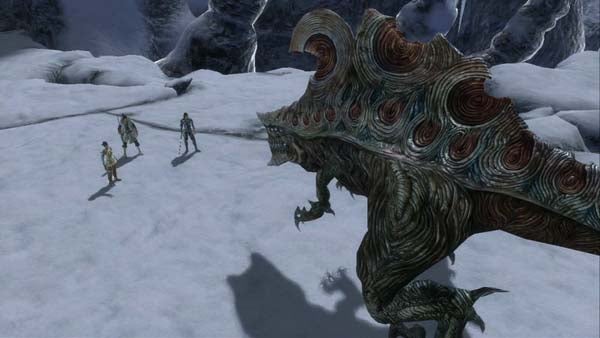
You see, despite all its dated elements and numerous annoyances, Lost Odyssey is easily the most enjoyable, addictive and compulsive Japanese RPG I’ve played in several years, for the simple reason that its story-telling is majestic. The central figure, Kaim, isn’t yet another surly teen or plucky urchin, but an immortal man who has had his memories stolen and his heart worn down by the cruelties of life and the passage of time. His gradual reawakening to emotion is a genuinely heart-wrenching experience. His story begins like any old tough guy on a mission narrative – albeit one with a spectacular disaster-movie opening – but as the game moves on it shifts seamlessly from political drama to war epic to family melodrama and beyond. Along the way we get betrayals, surprising alliances, a touch of romance, military coups and official conspiracies, the odd spot of rather silly comedy and even a weirdly touching funeral. Bar a few slips, the tale is superbly told.
It helps that the other characters are also surprisingly likable, whether they’re hoodwinked royals, compassionate pirates or foppish would-be Casanovas. Each has his or her own character arc, and even if some of the turns and twists prove predictable, there’s always something enigmatic or exciting that makes you want to know more. And when it comes to it, Lost Odyssey is probably the most successful RPG tear-jerker since you-know-who coughed it in Final Fantasy VII. Some of the game’s strange emotional depth comes from the dream-memories Kaim awakens as he makes progress through the tale. Presented as simple text short stories these slowly flesh out Kaim’s part and personality, filling in what it feels like to tread the earth while generation after generation of friends, comrades, children and lovers are born, live and die. Written by an acclaimed Japanese novelist and thoughtfully translated, they’re more haunting than a hundred brash cut-scenes ever could be. 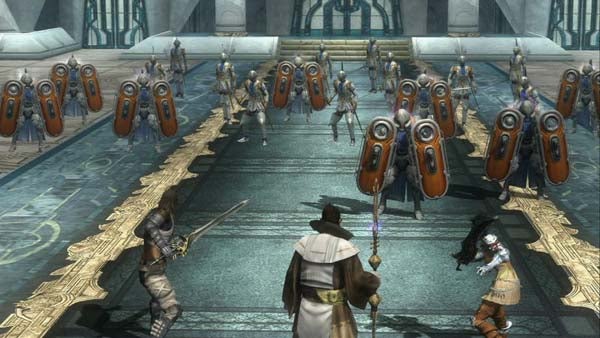
In the end, all those dated mechanics and potentially game-wrecking annoyances don’t count for much when put against the pull of the characters and story – particularly when, while hardly forward-looking, the actual pace and experience of the gameplay is really very good. After all, wasn’t Final Fantasy XII – for all its innovations and intelligent new ideas – a little bit boring a lot of the time? Lost Odyssey is a stately game and too traditional for its own benefit, yet the more I play it, the more it feels like the War and Peace of Japanese RPGs; sprawling in scale and ambition, yet strangely intimate at the same time – a game that can deliver on the big moments, but also on the smaller stage as well. I’d love to give it a nine and tell you all to go and buy it, but given the game’s various issues and the rather slow build-up at the start I guess that an eight is a fairer score. Forget the ratings, however, and forget any disparaging Final Fantasy comparisons you might have come across elsewhere. If you know and like Japanese RPGs – or even if you used to – then Lost Odyssey is one that you really ought to play.
”’Verdict”’
It might have one foot firmly stuck in the past, but Lost Odyssey’s ambitious, emotionally-charged storytelling is leagues ahead of the more progressive Final Fantasy XII. A seriously flawed classic, but a classic all the same.
Trusted Score
Features
| Player(s) | 1 |

